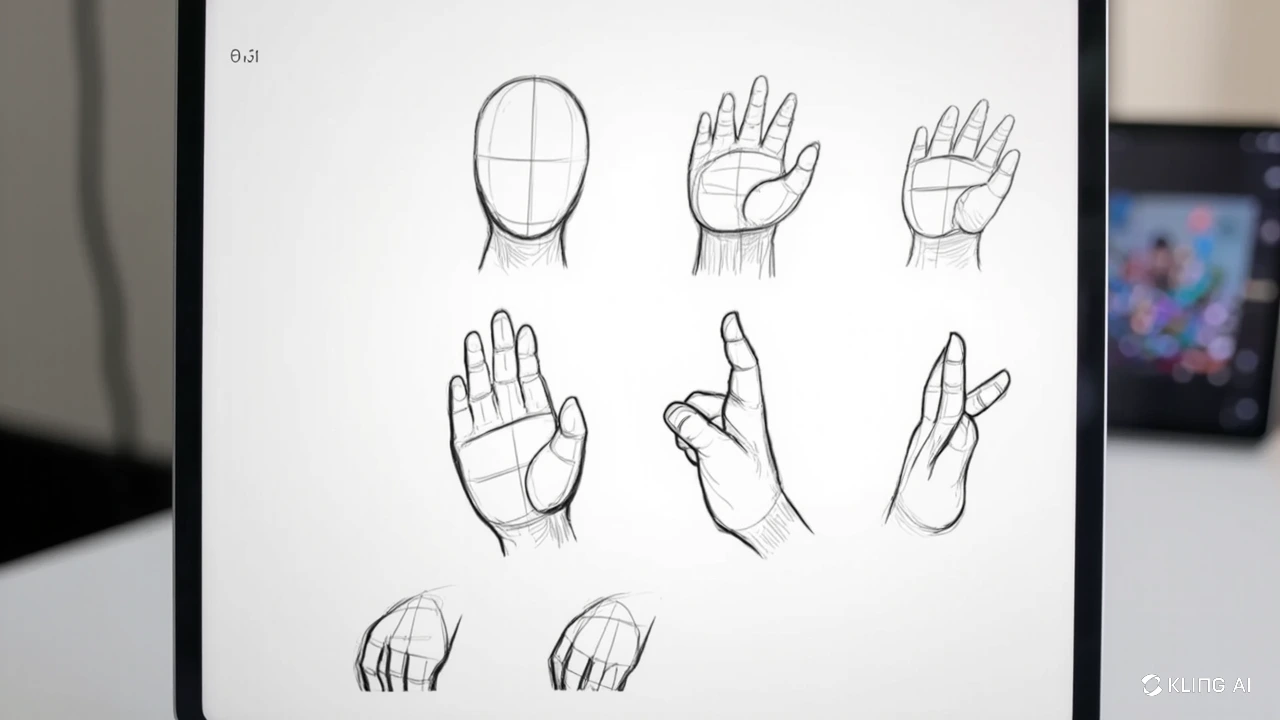How to Draw Hands: Easy Anatomy and Posing Tips

✋ How to Draw Hands – Complete 2025 Guide to Anatomy, Structure & Posing for Beginners
Drawing hands is one of the biggest challenges artists face—yet also one of the most rewarding when mastered. With their complex form, flexibility, and expressive potential, hands can convey more emotion than words when drawn accurately.
In this beginner-friendly and SEO-optimized 2025 guide, we break down how to draw hands step by step, using industry-level techniques for anatomy, posing, and rendering. Whether you’re sketching by hand or working digitally, this tutorial will help you create lifelike, expressive, and dynamic hands with confidence.
🧱 Section 1: Hand Anatomy Simplified
🖐 Basic Construction:
To begin, reduce the hand to simple geometric forms:
Palm: Think of it as a modified square, slightly wider toward the fingers and tilted depending on pose
Fingers: Tapered cylinders with three segments each (length = middle > index > ring > pinky)
Thumb: A triangular wedge that operates at a diagonal from the palm
📌 Key Anatomical Landmarks:
Knuckle Arc: Knuckles form a curve—not a straight line—when viewed from the front
Finger Webbing: Creates soft U-shaped curves between digits
Wrist Indentation: Where tendons meet and the hand flares into the forearm
Pro Tip: Study your own hand under different lighting to observe shadows and angles in real time.
📐 Section 2: Professional Hand Drawing Method (3 Phases)
1. Block Phase:
Begin with a boxy palm shape
Lightly sketch finger placement lines as guide rails extending outward
2. Structure Phase:
Add three joints per finger with small circles
Sketch the thumb rotation axis (about 45° from the index base)
Indicate base plane tilt and finger angle
3. Contour Phase:
Add flowing outer lines for fingers
Refine the curves and creases of the palm
Pay attention to skin folds at finger bases and along joints
Visual Tip: Use mirror flipping or overlay comparison when practicing symmetry in hands.
💫 Section 3: Dynamic Hand Posing Techniques
Hands are never static—they bend, stretch, grip, and gesture. Understanding movement gives your art life.
🤲 Natural Gestures:
Relaxed hands: Slight bend in fingers, fingers spread unevenly
Tensed hands: Straighter fingers, tighter spacing
Observe the rhythm of finger spacing—not all fingers are evenly spread
⚡ Action & Expression Poses:
Gripping Objects: Fingers wrap with varying pressure—observe tension in knuckles
Pointing: The index extends, others curl—create directional flow from shoulder to fingertip
Expressive Gestures: Use ASL and body language references to capture natural emotion (e.g., open hand for calm, splayed fingers for surprise)
🧑🎨 Section 4: Advanced Rendering – Realism & Character
👵 Age Variations:
Children: Plump, rounded hands with smooth joints
Elderly: Veiny, bonier structures with visible tendons and deep wrinkles
👨🦰 Gender Features:
Masculine hands: Broader palms, boxier fingers, pronounced knuckles
Feminine hands: Tapered shapes, narrow wrists, smoother contours
Rendering Tip: Light source affects finger shadow length dramatically—use cast shadows between fingers for depth.
💻 Section 5: Digital Drawing Workflow for Hands (2025 Standard)
🖥 Layer Strategy:
Construction (blue or low-opacity sketch)
Clean Lineart: Focus on tapering lines and pressure variation
Value Blocking: Use 3 tones to define form (light, mid, shadow)
Detail Layer: Add creases, folds, knuckles, and nails
🖌 Brush Techniques:
Use custom knuckle brushes or texture overlays for realism
Try preset nail brushes for consistent shapes across fingers
Add noise layers for skin texture or dry brush for sketch realism
📷 Bonus Tips for Studying Hands Like a Pro
Photograph Your Own Hands: Create a personalized hand pose library in different lighting and angles
Use 3D Hand Models: Apps like MagicPoser, Handy, or JustSketchMe allow for rotation and custom poses
Practice in Sets: Draw 10 hands per week in different gestures to build visual memory
Gesture Challenges: 1-minute poses help loosen up drawing habits
✅ Final Thoughts – Drawing Hands Made Simple
Hands are complex—but they don’t have to be intimidating. With practice and a methodical approach, you can break them down into simple structures, bring them to life with gesture and volume, and finish with professional-level rendering. Whether you’re drawing for comics, animation, or character design, hands are essential for storytelling, emotion, and realism.
So stretch your fingers, grab your stylus or pencil—and start mastering hands one pose at a time.